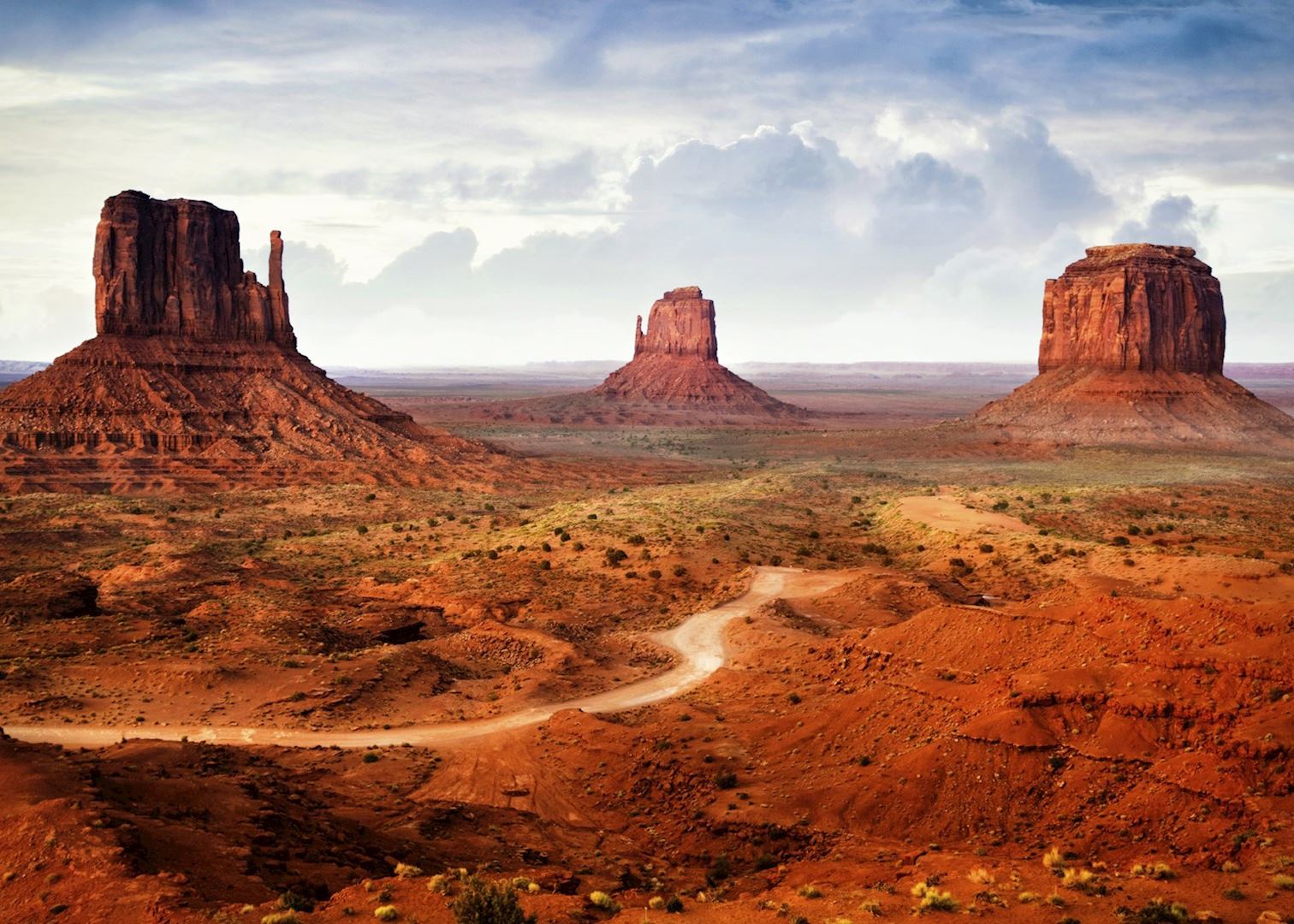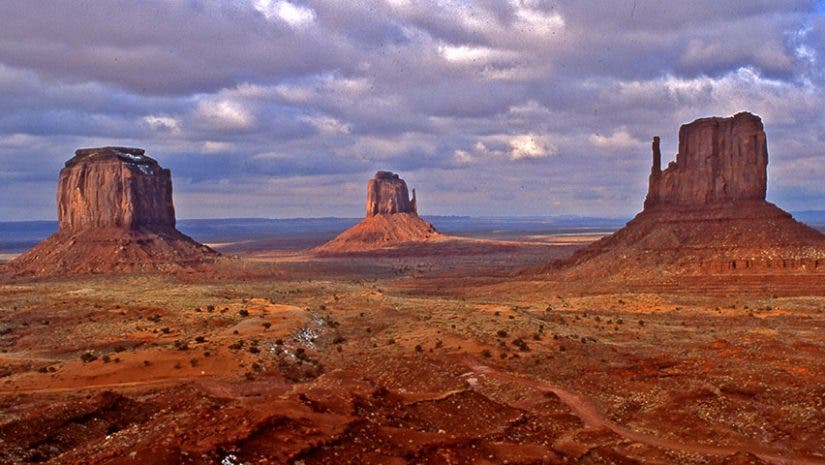
Monument Valley Navajo Tribal Park is an iconic landscape, a vast, arid expanse of towering sandstone buttes, mesas, and spires that rise dramatically from the desert floor. Its stark beauty, rich cultural heritage, and cinematic history make it an unparalleled destination for photographers. Capturing the essence of this majestic land, however, requires more than just pointing a camera. It demands preparation, respect, and an understanding of its unique challenges.
Essential Gear for the Desert Photographer
Before venturing into the heart of Monument Valley, a well-thought-out gear kit is paramount. The extreme conditions – from intense sun to dust and wind – necessitate robust equipment and foresight.
Camera Body: A modern DSLR or mirrorless camera capable of shooting in RAW format is essential. Full-frame sensors offer superior low-light performance and dynamic range, critical for sunrises, sunsets, and astrophotography. However, APS-C cameras can still yield stunning results.
Lenses:
- Wide-Angle (14-24mm or similar): Indispensable for capturing the expansive vistas, towering formations, and dramatic skies. Crucial for astrophotography.
- Mid-Range Zoom (24-70mm or 24-105mm): A versatile workhorse for general landscapes, allowing for varying compositions and framing.
- Telephoto (70-200mm or longer): Excellent for isolating distant formations, compressing perspective, or capturing details on the sheer rock faces. It’s also useful for shooting from a distance without disturbing wildlife or cultural sites.

Tripod: Non-negotiable. A sturdy tripod is vital for sharp landscape shots, especially in low light, for bracketing exposures, and for any long-exposure work, including astrophotography. Look for one that’s stable in windy conditions.
Filters:
- Circular Polarizer (CPL): Reduces glare from the sky and rock surfaces, deepens blue skies, and enhances saturation.
- Neutral Density (ND) Filters: Allows for longer exposures in bright conditions, useful for smoothing moving elements like clouds (though often not relevant in Monument Valley’s static beauty, it can be useful for specific effects).
- Graduated Neutral Density (GND) Filters: Balances bright skies with darker foregrounds, preventing blown-out highlights or underexposed shadows. Often, bracketing and post-processing can achieve similar results, but GNDs can simplify the process in the field.

Accessories:
- Extra Batteries and Memory Cards: The remote nature of Monument Valley means power sources are scarce. Always carry more than you think you’ll need.
- Cleaning Supplies: Dust is a constant companion. A blower, lens cloth, and sensor cleaning kit are vital.
- Remote Shutter Release: Minimizes camera shake for long exposures and astrophotography.
- Headlamp/Flashlight: Essential for pre-dawn setups, night photography, and navigating in the dark.
Mastering the Light: Timing is Everything
Monument Valley’s visual drama is largely dictated by light. Understanding its nuances is the key to unlocking the park’s photographic potential.
Golden Hour (Sunrise & Sunset): These are the magic moments. The low angle of the sun bathes the sandstone formations in warm, rich hues of orange, red, and gold, creating long, dramatic shadows that define their contours.
- Sunrise: Often less crowded than sunset, sunrise offers pristine light and a sense of solitude. Position yourself to capture the first rays hitting the Mittens or Merrick Butte.
- Sunset: Equally spectacular, with the formations often silhouetted against a fiery sky or illuminated by the last golden light.
Blue Hour: The period just before sunrise and after sunset, when the sky takes on a deep, ethereal blue. This soft, even light is excellent for capturing subtle details and a cooler color palette.
Midday: Generally avoided by landscape photographers due to harsh overhead light, which flattens details and creates strong, unflattering shadows. However, it can be utilized for specific purposes, such as capturing strong textural details of the rock faces in direct sun or emphasizing the vastness under a brilliant blue sky.
Night Photography (Astrophotography): Monument Valley boasts some of the darkest skies in the United States, making it a prime location for astrophotography. On moonless nights, the Milky Way arches majestically over the iconic formations.
- Challenges: Long exposures, precise focusing in the dark, and keeping warm.
- Tips: Use a fast wide-angle lens (f/2.8 or wider), a sturdy tripod, and a remote shutter. Focus manually on a bright star or use live view with magnification. Experiment with ISO (1600-6400) and shutter speed (15-30 seconds) to capture the stars without trailing.
Composition and Iconic Perspectives
Monument Valley offers endless compositional possibilities, from sweeping vistas to intimate details.
The Classics:
- Forrest Gump Point (Highway 163): Approximately 13 miles north of the park entrance, this viewpoint offers the iconic straight road leading directly towards the Mittens and Merrick Butte. Use a telephoto lens to compress the perspective and make the formations appear closer.
- The Mittens and Merrick Butte: These are the most photographed formations. Experiment with foreground elements like sagebrush, small rocks, or even your vehicle to add depth and interest.
- John Ford’s Point: A designated viewpoint within the park, famous for its cinematic history. It provides a classic vista with a lone rider often available for photo opportunities (for a fee).
Compositional Techniques:
- Leading Lines: Utilize the winding roads, dry washes, or natural lines in the landscape to draw the viewer’s eye towards your main subject.
- Rule of Thirds: Place key elements along the intersecting lines or at their intersections for a balanced and engaging composition.
- Framing: Use natural arches, rock formations, or even the windows of a vehicle (if stationary and safe) to frame your subject.
- Scale: The formations are immense. Including a person, a vehicle, or even a small plant in the foreground can help convey the monumental scale.
- Silhouettes: During sunrise or sunset, position the formations between you and the sun to create dramatic silhouettes against a colorful sky.
Respecting the Land and Culture: Navajo Nation Guidelines
Monument Valley is not a national park; it is a Navajo Tribal Park, located within the Navajo Nation (Diné Bikéyah – The People’s Land). This distinction is crucial and impacts how photographers should approach their visit.
Permits and Access:
- Photography Permits: Commercial photography or filming requires specific permits from the Navajo Nation Film & Media Commission. Even non-commercial photographers planning extensive shoots or using specialized equipment (like drones) should inquire.
- Drones: Crucially, drone use is strictly prohibited within Monument Valley Navajo Tribal Park and across the entire Navajo Nation without explicit, official permission and permits. This is due to cultural sensitivity, privacy concerns, and safety. Violations can result in significant fines and confiscation of equipment. "The Navajo Nation takes the protection of our lands, culture, and privacy very seriously," a spokesperson might emphasize.
- Restricted Areas: Many areas within the park are sacred or culturally sensitive and are off-limits to visitors without a Navajo guide. Respect these boundaries.
Hiring a Navajo Guide: This is highly recommended and often essential for a truly enriching photographic experience.
- Access: Guides can take you to exclusive areas not accessible to the general public, offering unique perspectives and compositions.
- Safety: They are intimately familiar with the terrain, weather patterns, and potential hazards.
- Cultural Insight: Guides provide invaluable cultural context, sharing stories, history, and traditions that deepen your appreciation for the land. "Our land tells stories that have been passed down through generations," a Navajo guide might explain. "A guide can help you understand those stories, not just see them."
- Authenticity: They can arrange opportunities to photograph Navajo cultural elements (e.g., hogans, traditional crafts) with appropriate permission and respect.
Leave No Trace: Practice the principles of Leave No Trace. Pack out everything you pack in. Stay on designated roads and trails. Do not disturb wildlife, plants, or geological formations.
Technical Considerations and Post-Processing
Shoot in RAW: Always shoot in RAW format. This captures the maximum amount of image data, providing far greater flexibility in post-processing for adjusting exposure, white balance, shadows, highlights, and color.
Exposure Bracketing: For high-contrast scenes (like sunrise/sunset), bracket your exposures. Take several shots at different exposures (e.g., -2, 0, +2 EV) and blend them later in post-processing to create a High Dynamic Range (HDR) image that captures detail in both the brightest and darkest areas.
Focus Stacking: If you want extreme sharpness from a very close foreground element to the distant horizon, consider focus stacking. Take multiple shots, each focused at a different distance, and blend them in post-processing.
Post-Processing: This is where your images truly come to life.
- White Balance: Correct for accurate colors.
- Exposure and Contrast: Adjust to bring out detail and punch.
- Shadows and Highlights: Recover detail in underexposed shadows and overexposed highlights.
- Clarity and Dehaze: Enhance texture and remove atmospheric haze.
- Color Grading: Fine-tune the hues, saturation, and luminance to match the mood you experienced.
Safety and Logistics
- Water: Carry ample water. The desert environment is unforgiving, and dehydration is a serious risk.
- Sun Protection: Wide-brimmed hat, sunscreen, sunglasses.
- Appropriate Clothing: Layers are best, as temperatures can fluctuate dramatically between day and night. Sturdy hiking shoes are a must.
- Vehicle: A high-clearance vehicle is recommended for navigating the unpaved 17-mile scenic loop road within the park.
- Communication: Cell service is unreliable. Inform someone of your plans, especially if venturing off the main loop with a guide.
Monument Valley is more than just a collection of rocks; it is a living landscape, steeped in history and culture. Approaching its photography with respect, preparation, and an open mind will not only yield breathtaking images but also a deeper, more meaningful connection to this extraordinary corner of the world. The patience to wait for the perfect light, the humility to learn from its indigenous caretakers, and the commitment to capture its spirit will transform a mere snapshot into a timeless work of art.


